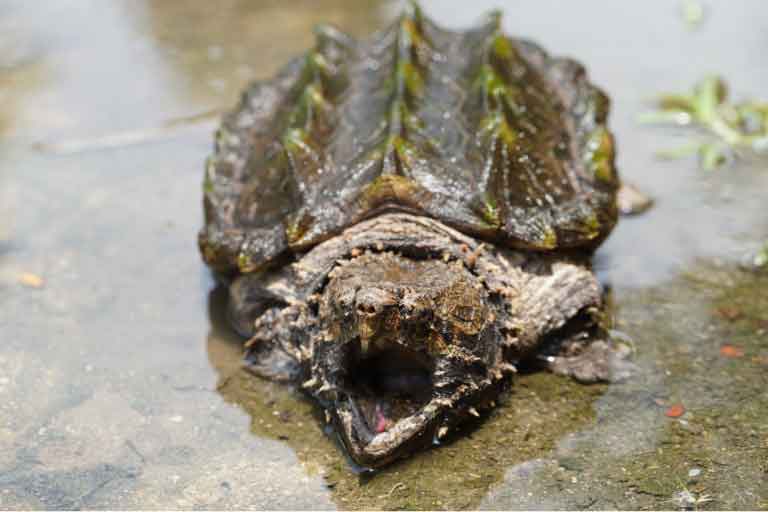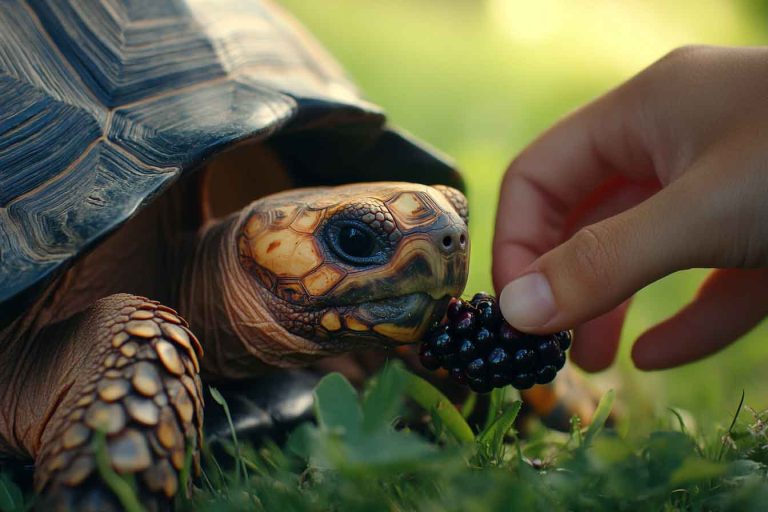How to Deal with Aggressive Behavior in Pet Turtles: A Calm and Effective Guide for Owners
When I first brought home my turtle, I pictured peaceful days of quiet basking, slow paddles through the tank, and the occasional nibble on a lettuce leaf. But that dream hit a wall—hard—when my turtle started hissing, lunging, and even biting. I wasn’t prepared for the aggression, and if you’re reading this, you might be…
When I first brought home my turtle, I pictured peaceful days of quiet basking, slow paddles through the tank, and the occasional nibble on a lettuce leaf. But that dream hit a wall—hard—when my turtle started hissing, lunging, and even biting. I wasn’t prepared for the aggression, and if you’re reading this, you might be going through something similar.
Let me walk you through what I’ve learned from years of turtle ownership, personal trial and error, and countless deep-dives into reptile care forums and vet advice. Turtle aggression isn’t random. It’s usually a sign that something’s off in their environment or how we’re handling them.
Are Pet Turtles Naturally Aggressive?
In general, turtles are solitary and peaceful, but yes, they can show aggression under certain conditions. This behavior isn’t about personality as much as it is about survival. In the wild, turtles don’t have many ways to defend themselves—so when they feel threatened, they hiss, snap, or retreat.
Some turtles are just more reactive by nature. Red-eared sliders, snapping turtles, and softshell turtles are more prone to aggressive behavior than species like box turtles or musk turtles. But regardless of the species, even a normally calm turtle can bite or lash out when something in its environment doesn’t feel right.
From my own experience, I’ve found that aggression tends to surface in three major areas: stress, space, and handling. Let’s take a closer look.

Common Reasons for Aggressive Turtle Behavior
1. Your Turtle Feels Unsafe or Threatened
This is the number one cause of snapping, biting, and sudden lunges. Turtles are prey animals—they’ve survived for millions of years by reacting quickly to danger. When you reach into their tank without warning or try to pick them up abruptly, they may feel cornered. And that’s when the biting starts.
I once had a young red-eared slider who would bite my hand every time I reached in, even when I wasn’t trying to touch him. It took me a while to understand that from his perspective, a giant hand coming down from the sky was terrifying.
What you can do:
- Always let your turtle see you approaching.
- Move slowly and deliberately.
- If you need to pick them up, scoop from underneath rather than grabbing from above.
2. They’re Fighting Over Territory or Food
If you’re keeping multiple turtles in the same enclosure, this could be the source of your problem. Turtles aren’t naturally social animals. In fact, they’re very territorial. That means they may fight over the basking area, swim space, or food—especially if the tank is too small or under-resourced.
I made the mistake once of keeping two males together in a 55-gallon tank. Within days, one was chasing and biting the other’s legs during feeding time. No matter how much I separated them, the aggression didn’t stop until I gave them separate tanks.
Watch for:
- One turtle always dominating the basking spot
- Biting at limbs or shells
- Constant chasing or cornering
3. Inadequate Tank Setup or Poor Conditions
Aggression is often a symptom of environmental stress. If your turtle’s tank is too small, too crowded, or lacking in hiding spots and basking areas, they’ll feel confined and anxious. This can absolutely lead to aggressive outbursts—either toward you or other tank mates.
Think of it this way: turtles need control over their space. If they can’t get away from bright lights, aggressive tank mates, or too much noise, they may become irritable and snappy.
Essentials for a peaceful habitat:
- Tank Size: At least 10 gallons per inch of shell length (a 4-inch turtle needs 40 gallons minimum)
- Basking Area: A clean, warm space out of the water with a UVB bulb
- Water Temp: Should range between 75°F–80°F depending on species
- Hiding Places: Driftwood, rock caves, floating plants, etc.
When I upgraded my tank and added a second basking platform, my turtle’s behavior improved almost overnight. He no longer felt like he had to compete or defend his space.

Signs Your Turtle Is Getting Aggressive
You can usually spot the signs before the actual bite. Turtles often give subtle warnings before they snap. Here’s what to look for:
- Hissing: A sharp breath sound, often made when threatened or handled
- Sudden Retraction: Pulling into the shell quickly when you approach
- Posturing: Raising up on all fours, stretching the neck, and staring
- Biting Motions: Snapping at the glass or anything near their head
- Chasing Behavior: Especially in shared tanks, one turtle chasing another repeatedly
In one case, I noticed my male turtle would stretch his neck and puff out his throat every time I approached. It wasn’t long before he started lunging, so I took the hint and changed how I interacted with him.
How to Calm an Aggressive Turtle
If you’re dealing with a biting or aggressive turtle, don’t panic. It doesn’t mean your pet hates you—or that you’ve failed as a turtle parent. Most of the time, aggression is a symptom of discomfort or fear. Once you identify the trigger, you can start creating a safer, calmer environment.
Here’s what’s worked for me and other experienced turtle keepers:
1. Give Them Space—Literally
This is step one. A cramped enclosure is a recipe for frustration. You need enough swimming space, hiding spots, and basking areas to prevent territorial disputes. I recommend:
- 40-gallon tank minimum for one turtle
- Add an extra 10-15 gallons per additional turtle
- Provide two basking spots to avoid competition
A larger, well-structured tank often makes turtles feel more secure and significantly reduces aggressive behavior.
2. Avoid Handling Unless Necessary
I get it—you want to bond with your turtle. But turtles aren’t like dogs or cats. Most don’t enjoy being picked up, and frequent handling can actually cause stress and aggression.
When I stopped trying to hold my turtle every other day and focused on observing instead, he became more relaxed. Now, I only handle him when necessary—like during tank cleanings or health checks—and always with slow, gentle movements.
If you do need to pick up your turtle, follow these tips:
- Approach from behind or the side
- Support the shell from underneath, using both hands
- Never grab from above or by the tail—it’s painful and frightening for them
3. Don’t Hand-Feed Aggressive Turtles
Feeding from your hand might seem cute until your turtle mistakes your finger for food. Trust me—those bites hurt.
For turtles with a tendency to snap:
- Use feeding tongs or long tweezers
- Feed them in a separate container to reduce tank aggression
- Stick to a consistent feeding schedule to prevent food guarding
Once I made this change, not only did feeding time become safer, but my turtle also became less reactive overall—no more glass-banging when he saw me walk by.
4. Watch Their Body Language
Turtles might be silent creatures, but they do communicate. Paying attention to their body language can prevent a lot of issues.
Look for:
- Neck stretching or raised posture: They’re sizing you up.
- Open mouth movements: Could be warning you before biting.
- Avoidance behavior: Hiding more often or refusing food could signal stress.
Once, my turtle started refusing food and constantly hid under his dock. It turned out my new basking lamp was too close and overheating the enclosure. A simple repositioning fixed the issue—and his aggression disappeared.
5. Consider Separation for Aggressive Tank Mates
If you’re keeping more than one turtle and the aggression persists, it might be time to separate them. Turtles don’t crave companionship, and in many cases, they’re better off alone.
Here’s how to know it’s time to separate:
- Persistent biting or injuries
- One turtle won’t come out to bask or eat
- Unequal growth (one is clearly being bullied out of resources)
In my case, separating two males into different tanks ended weeks of constant stress—and both turtles started thriving on their own.

How to Prevent Aggression Before It Starts
Turtle aggression can often be avoided with proactive care. Over the years, I’ve learned that a well-cared-for turtle is usually a calm one. These are the habits I stick to that help me raise content, well-behaved turtles:
1. Keep Their Environment Consistent
Sudden changes—like switching tanks, adding new decorations, or changing lighting—can stress your turtle out. Try to keep the temperature, water quality, and layout steady. When you do make changes, ease them in slowly.
2. Respect Their Boundaries
If your turtle tends to hide or avoids interaction, don’t force it. Let them come to you over time. Patience is your best tool here. When you respect their space, they eventually start to trust you.
3. Know Your Species
Different turtles have different needs and temperaments. Snapping turtles, for example, are better left to experienced keepers due to their strong bite and defensive nature. Sliders and cooters, on the other hand, can be handled more easily with the right approach. Do your homework before bringing one home.
Frequently Asked Questions (FAQs)
Do turtles ever become friendly?
Yes, they can—especially if they associate you with food and safety. While they won’t wag their tails like a dog, turtles can recognize their owners and show signs of calm or curiosity over time.
Can I train my turtle not to bite?
You can’t train a turtle the way you would a dog, but you can build trust. Creating a low-stress environment, offering food with tools instead of your hands, and approaching slowly will gradually reduce defensive biting.
Is it safe to keep aggressive turtles with other pets?
I wouldn’t recommend it. Turtles can injure fish, other reptiles, and even small mammals. Plus, if your turtle is stressed by other pets, it could make their aggression worse.
What do I do if my turtle bit me and broke the skin?
Immediately wash the wound with soap and warm water. Turtles can carry Salmonella, so it’s important to disinfect the area thoroughly. If it’s a deep bite or you start feeling unwell, don’t wait—see a doctor.
Final Thoughts
Dealing with an aggressive turtle isn’t easy, but it’s absolutely manageable. I’ve been there—wondering what I did wrong, questioning if I could keep my turtle happy, or even worrying I’d have to rehome them. But once I stopped thinking of it as bad behavior and started seeing it as communication, things changed.
Aggression in turtles is almost always a reaction to stress, discomfort, or fear. And when you work to fix the root causes—whether it’s upgrading the tank, reducing handling, or just giving them space—you start to see real results.
You’ve got this. Keep observing, stay patient, and build that trust. And if you ever have questions, remember—you’re not alone in this.







